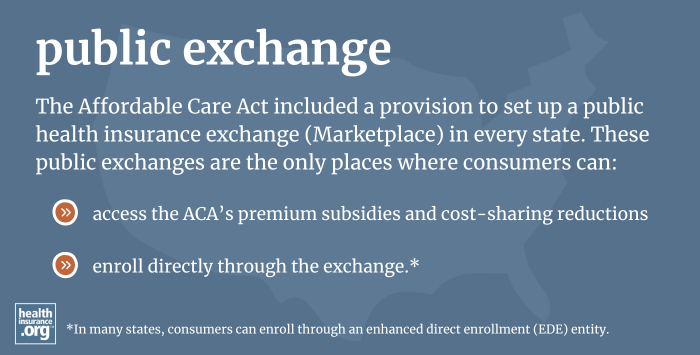
What is a public exchange?
The Affordable Care Act included a provision to set up a public health insurance exchange (Marketplace) in every state, run by either the state, HHS, or a collaboration between the two. The public exchange in each state is the only place where consumers can access the ACA's premium subsidies and cost-sharing reductions. Consumers can enroll directly through the exchange website (HealthCare.gov or a state-run platform), or in many states, via an Enhanced Direct Enrollment entity that partners with the public exchange.
Who runs the public health insurance exchange?
The exchange itself — meaning the Marketplace platform where you shop for coverage — is government-run, either by the federal government or your state's government. But the health plans available for sale in the exchange are from private health insurance companies, many of which have been providing health insurance for decades.
How many people use the ACA's public exchanges?
Nationwide, nearly 21 million people were enrolled in coverage through the public exchanges as of early 2024.1
Footnotes
- "Effectuated Enrollment: Early 2024 Snapshot and Full Year 2023 Average" CMS.gov, July 2, 2024 ⤶
